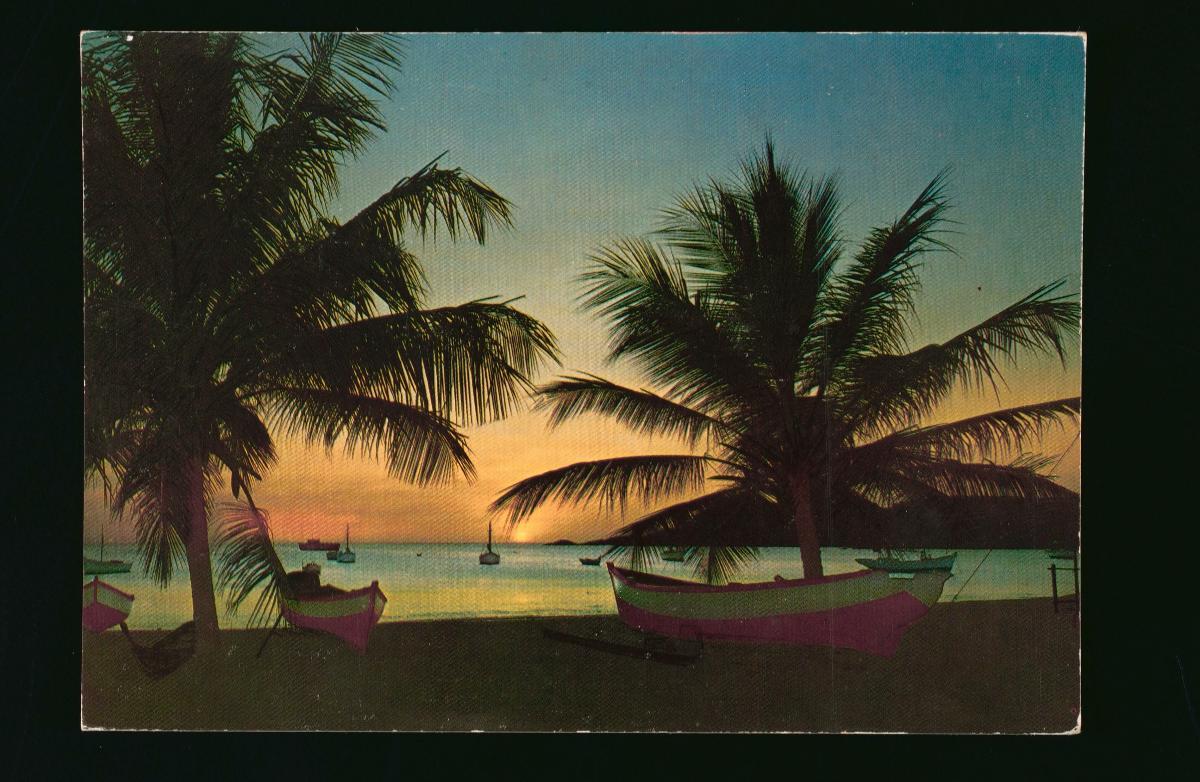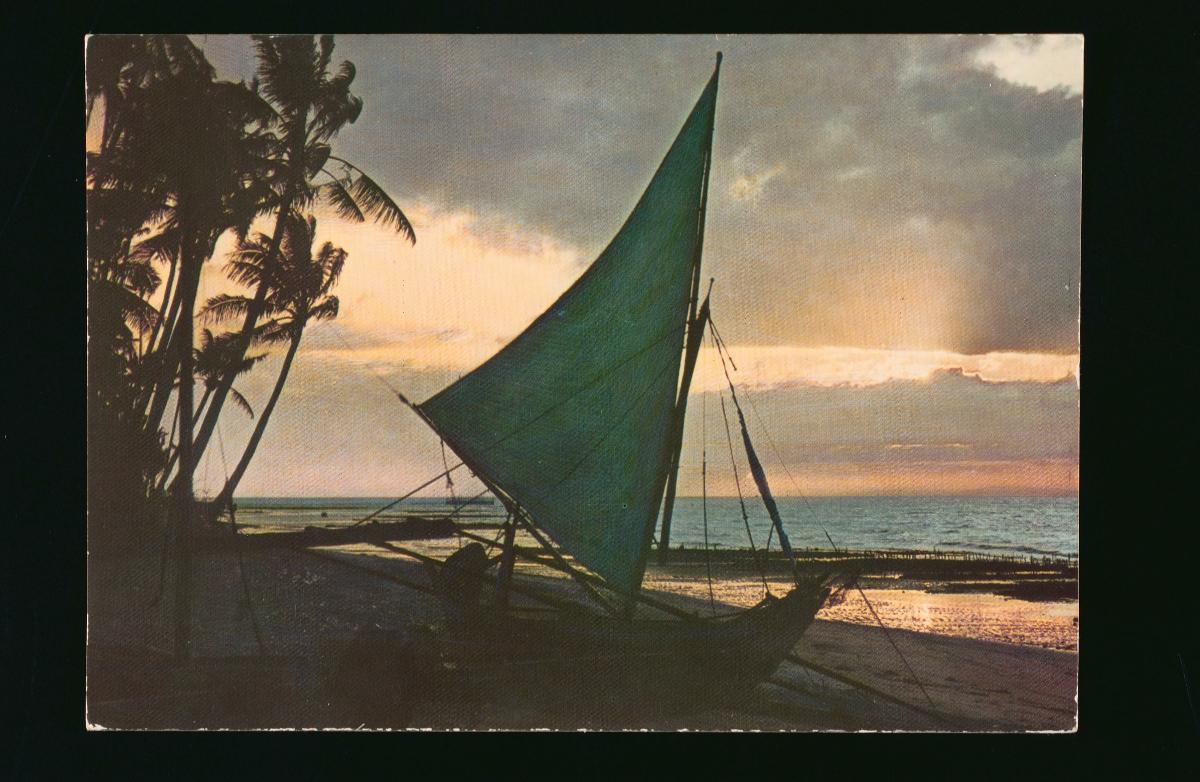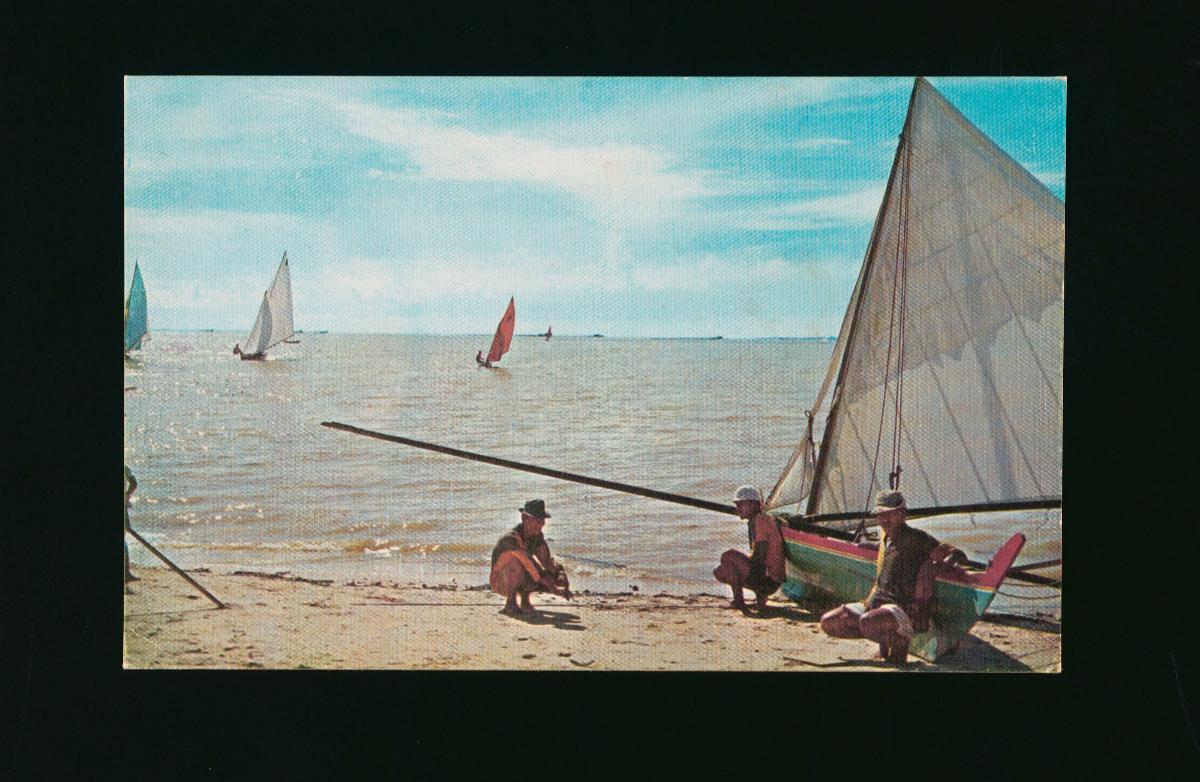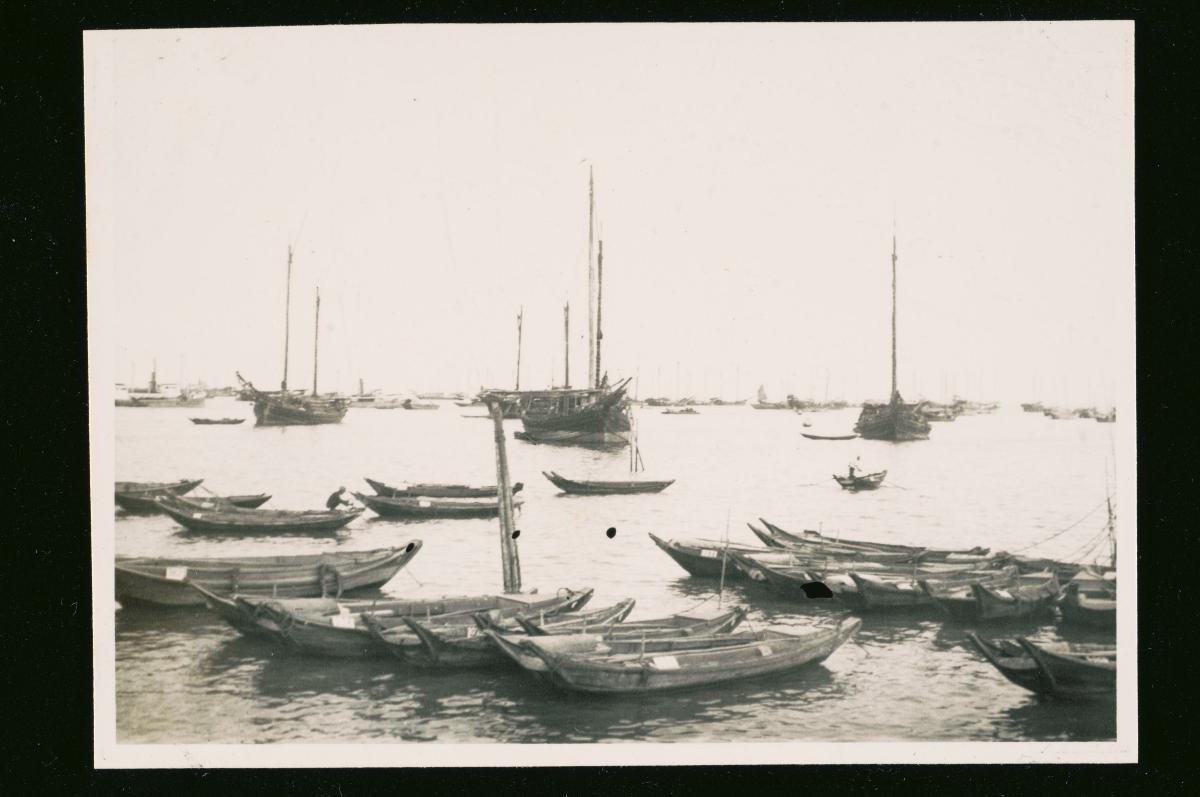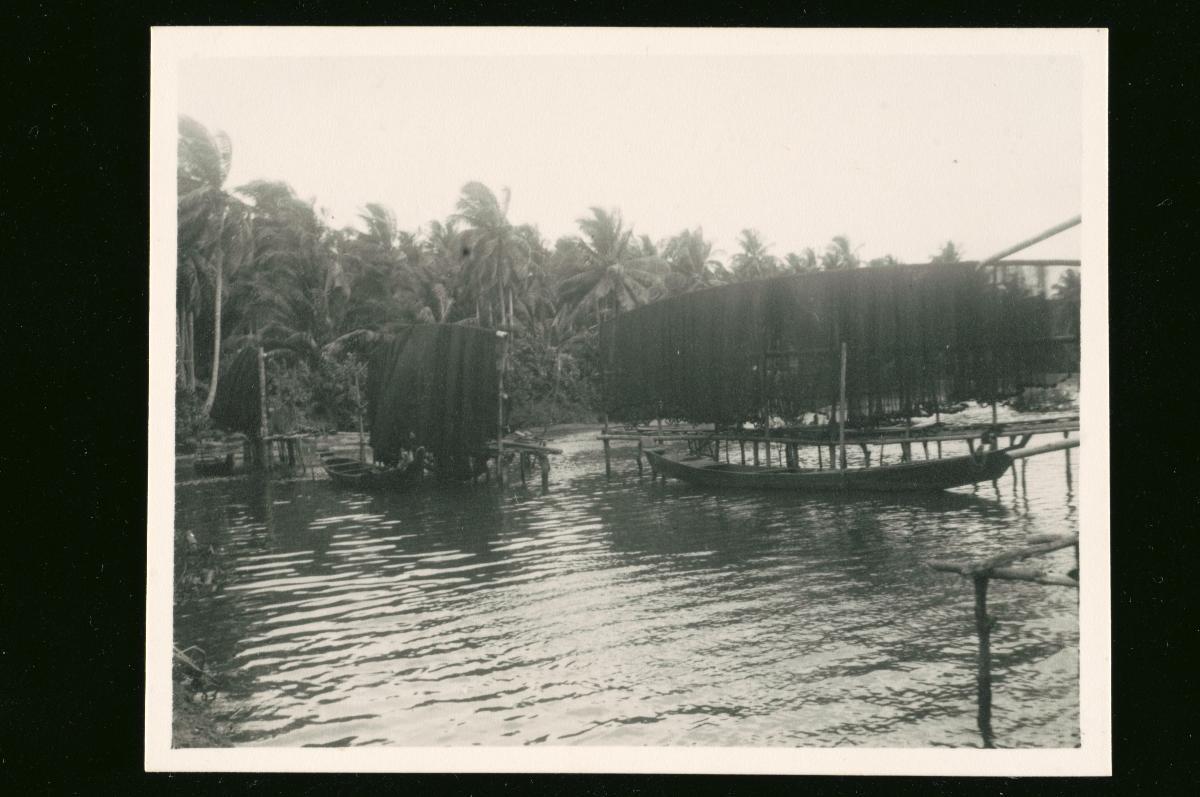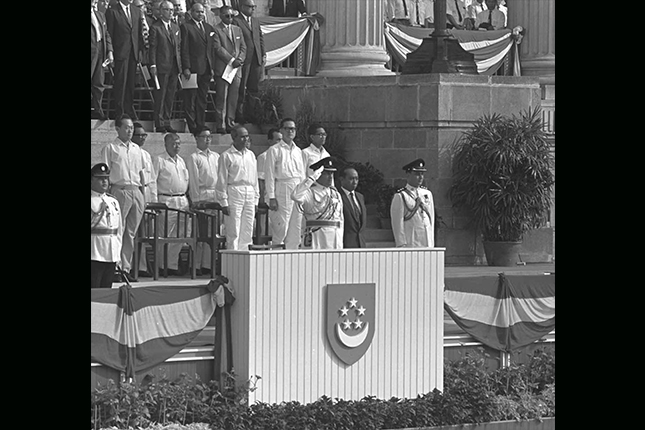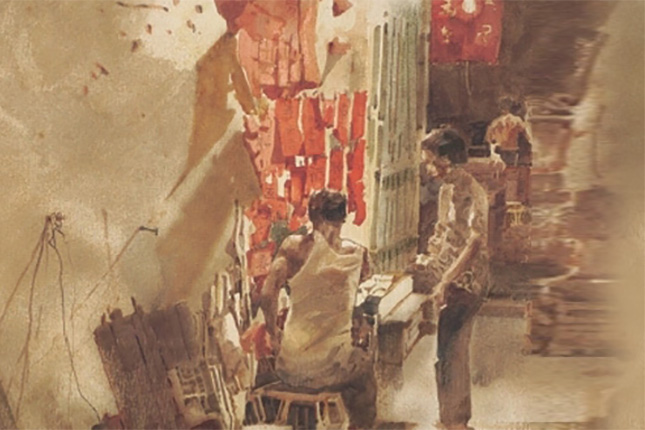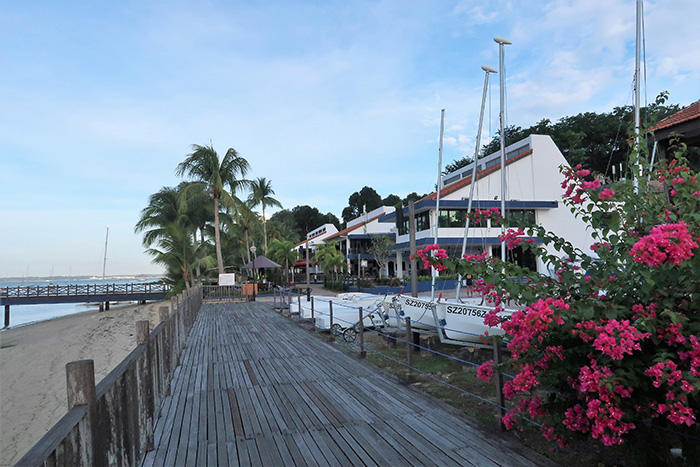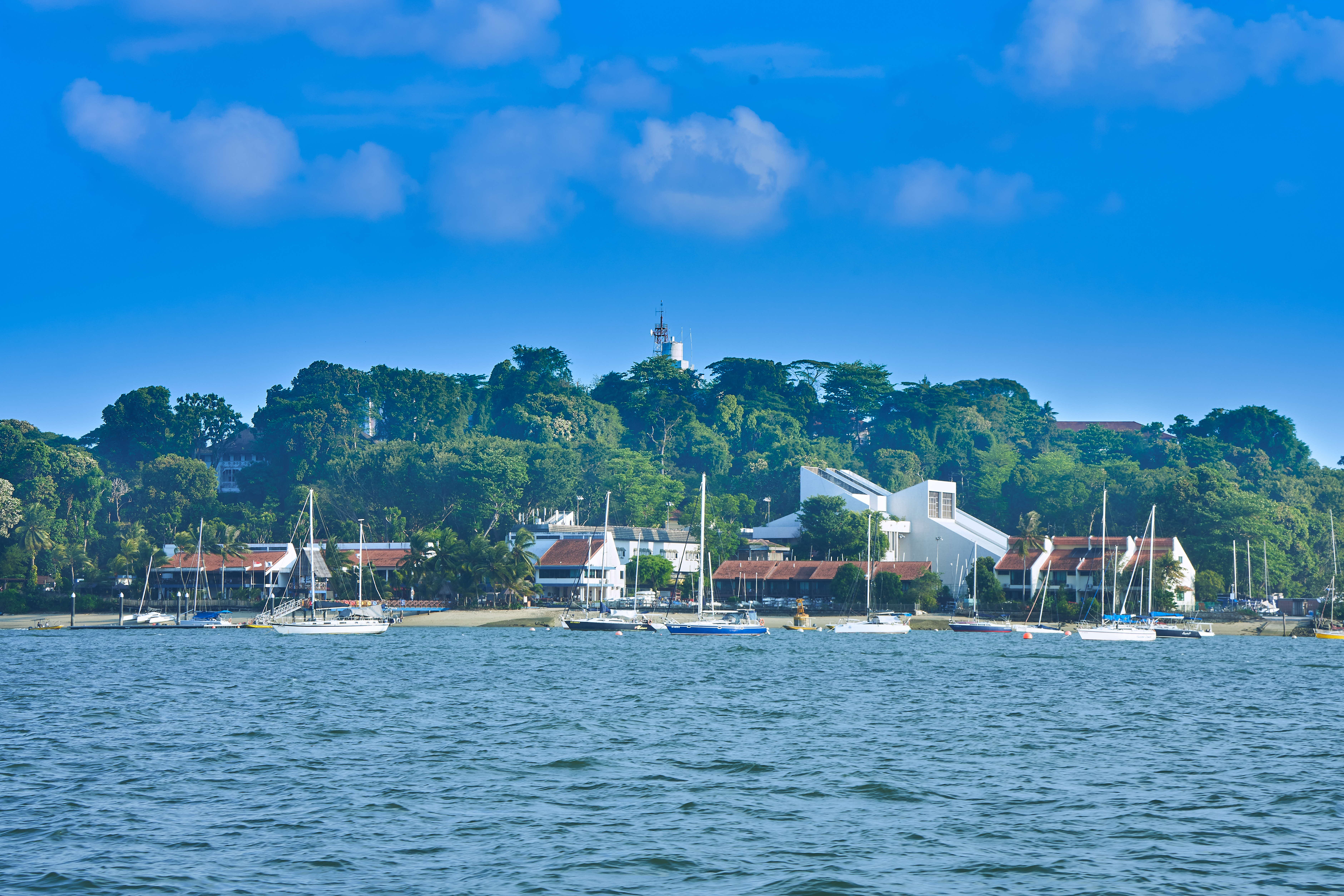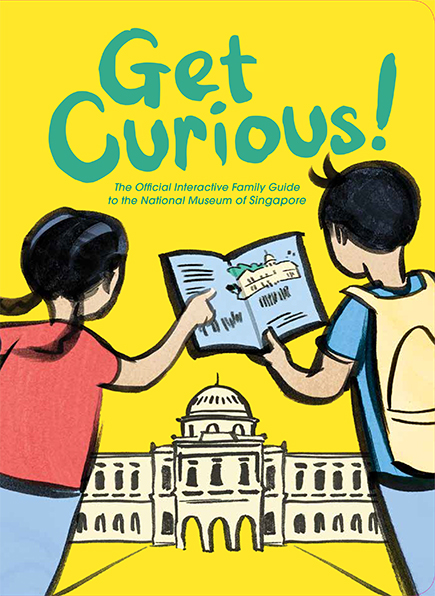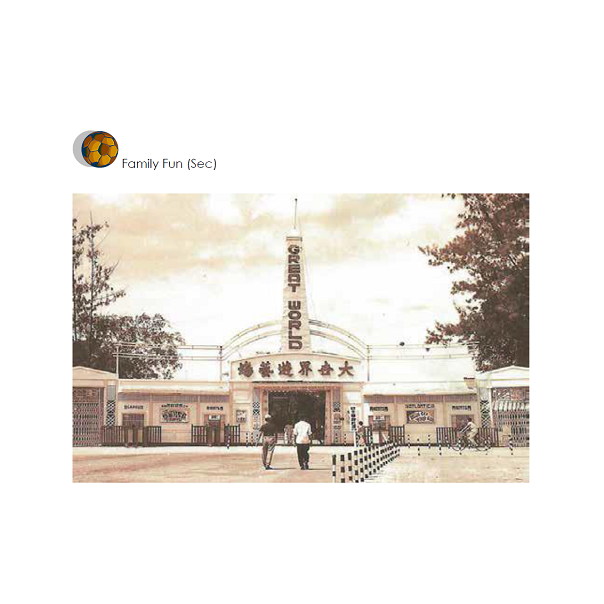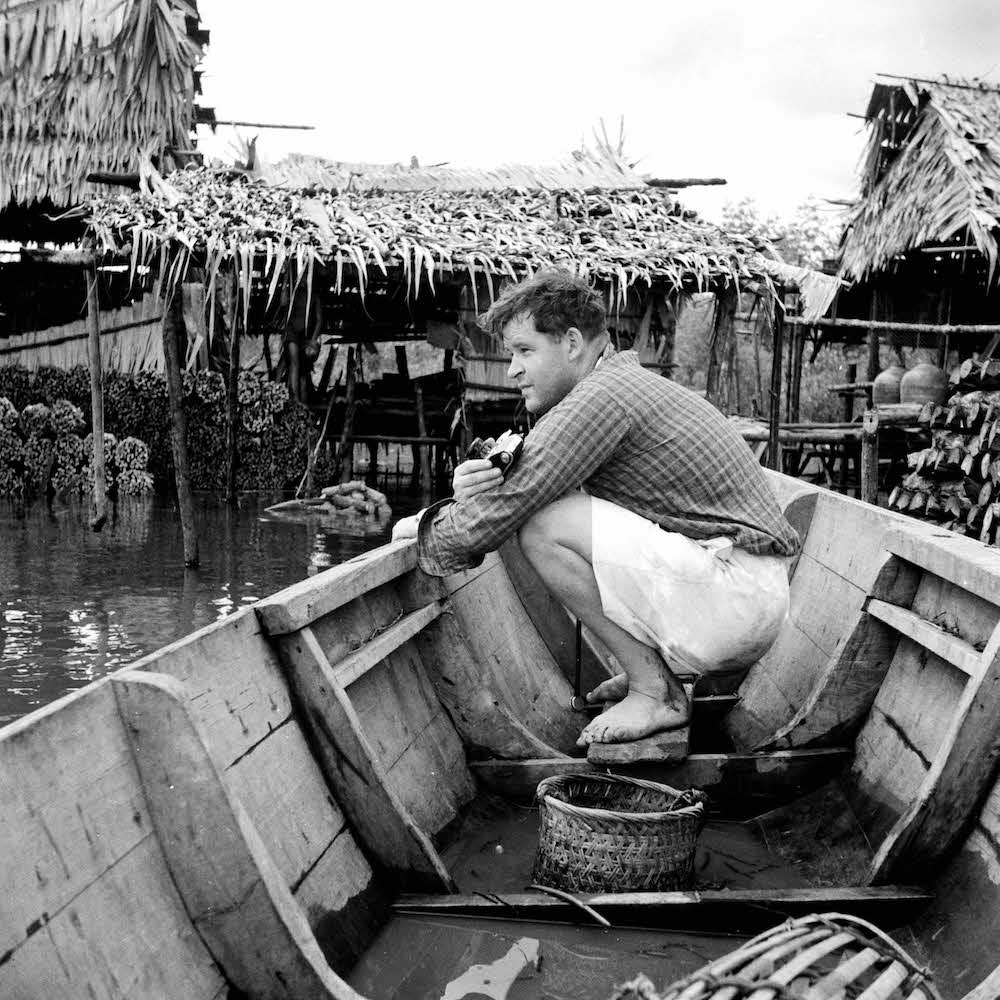The Malay term ‘perahu’ is used broadly to describe the various small sailing boats used in the waters of Southeast Asia for transport and fishing purposes. Traditional perahu have hulls known as ‘pajala’ (meaning ‘for use with the throwing net’), where the stem and stern posts are joined to the keel in a smooth curve. Various methods of rigging the sail are used for the perahu, notably the ‘layar tanja’ rig, which is favoured by Bugis and Makassarese sailors. Perahu that have Western influences in their design are referred to as ‘perahu lambo’. Instead of having a traditional pajala hull, the hull of a perahu lambo is similar to that of European sailing vessels, with the stem-post meeting a straight keel at an angle (right foreground). It is also common for the perahu lambo to employ gaff-rigged sails similar to those found on the English North Sea herring drifter, which is a fishing craft dating from around 1890.The Changi district, situated at the eastern end of Singapore, has a long history dating back to at least the 17th century when it was known by its Malay name, ‘Tanjong Rusa’. The area was referred to as ‘Tanjong Changi’ in an 1828 map of Singapore by Franklin and Jackson. There are several theories behind the origins of the name ‘Changi’. The botanist Henry Ridley of rubber growing fame suggested that the name was derived from the ‘chengal’ (also spelt ‘chengai’) trees that grew in the area. Others speculate that the name came from the Hopea Sangal tree, known locally as ‘chengal pasir’ or ‘chengal mata kuching’. The area was noted for its coconut and sago plantations and by the mid 19th century had developed into a seaside resort with bungalows and picnic sites along its sandy coastline. Between the 1950s and 1970s, Changi Beach was revived as a recreational area with holiday bungalows for weekend retreats. The laidback charm of the area was lost following the opening of Changi Airport in 1981, although the once idyllic beach has been preserved as the Changi Beach Park.




